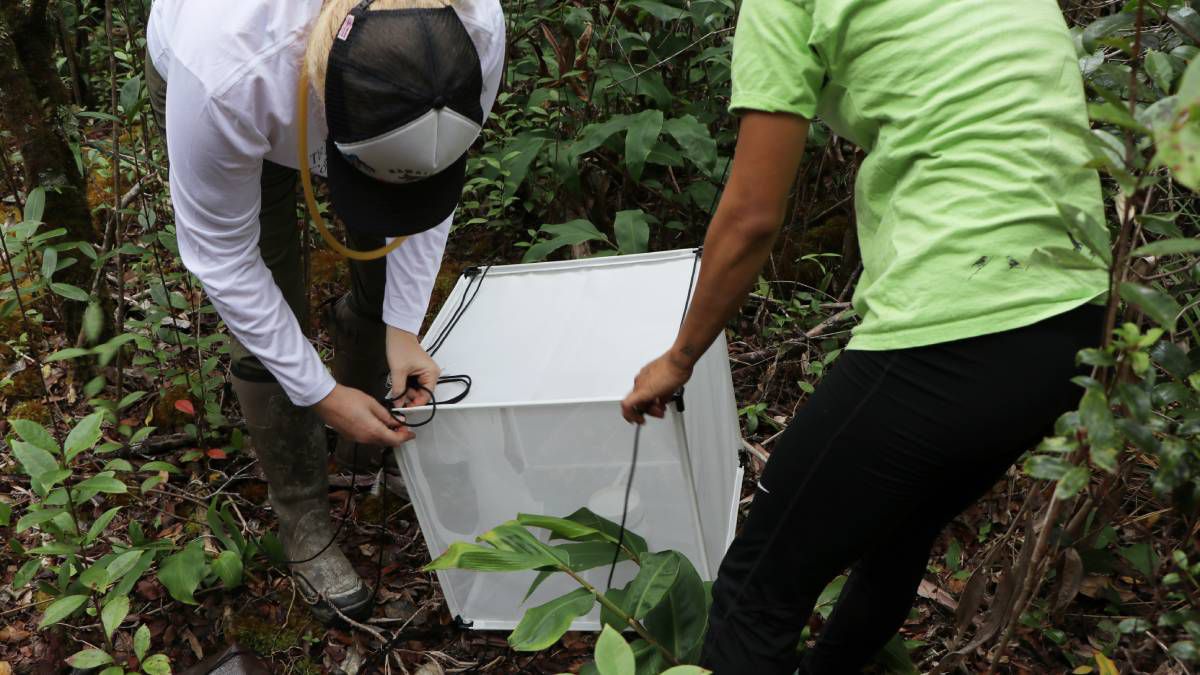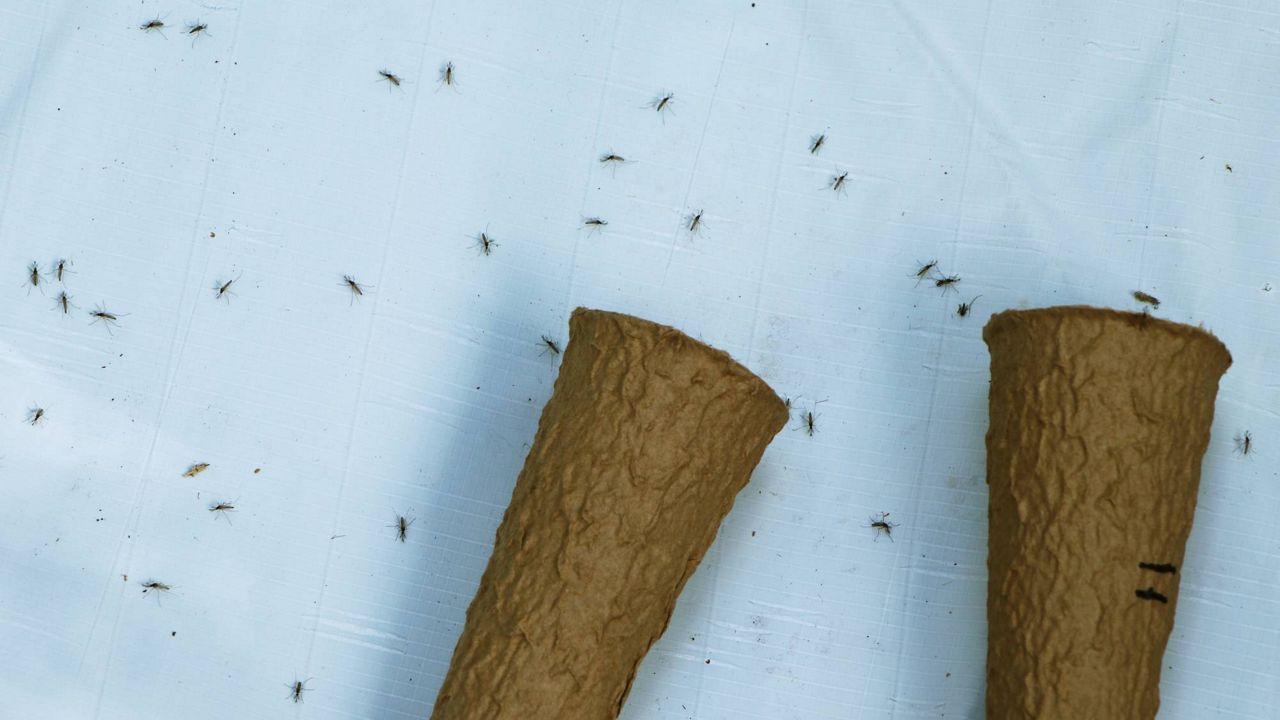KOKEE, Hawaii — Researchers and technicians gathered for the first-ever release of incompatible male mosquitoes on Kauai’s Alakai Plateau on Thursday in an effort to stop the extinction of at least four species of Native Hawaiian honeycreepers. The day was marked by excitement and emotion as many had worked over a decade to save the honeycreepers.
According to a Department of Land and Natural Resources release, the Thursday release of 20,000 male mosquitoes is a pilot study.
With climate change raising temperatures at higher elevations, female mosquitoes carrying avian malaria have encroached into forests that were once the birds’ last refuge. As a result, many honeycreepers have died. One species, the akikiki, has just five or six individuals remaining in the wild.
“I’m both sad and excited at the same time,” said Dr. Cali Crampton, project leader of the Kauai Forest Bird Recovery Project, in the release. “Sad to know that our forest birds are suffering so greatly from these mosquito-borne diseases. But, after years of trying everything we can to save them from extinction, it’s a relief to know that we are at the cusp of launching a tool that can reverse those declines.”
Incompatible Insect Technique aims to reduce mosquito populations in native bird habitat.
“Avian malaria is only carried by one species of mosquito, the female Culex quinquefasciatus, or Southern House mosquito. They are the only vector for this deadly disease of our avian friends, so we’re just looking to prevent the spread of this one mosquito,” stated Mele Khalsa, natural resource manager on Kauai with The Nature Conservancy, Hawaii and Palmyra.
Crampton said incompatible male Culex mosquitoes will breed with females and prevent fertilization so that there will be no next generation of mosquitoes and the population will see a decline. “I’m definitely not swatting any skeeters today because these mosquitoes are the savior mosquitoes,” said Crampton.

Twenty pods holding a thousand male mosquitoes each were arranged in a small clearing in Kokee. A rectangular mesh enclosure, referred to as a “bug dorm,” will be the center of a longevity trial to see how male mosquitoes survive after being released. Dozens of traps surrounding the release site as well as the bug dorm will be checked regularly over the next week.
“We’re looking at collecting data on how far they travel through the forest and how long they live,” said KFBRP Mosquito Research Coordinator Bryn Webber. “That information will be used for landscape-level releases to help determine how many pods to use and how the mosquitoes disperse across the landscape.”
Once the pods were uncovered, most of the mosquitoes flew away. No one got a single mosquito bite. It’s because male mosquitoes don’t bite, so they don’t spread diseases in birds or people.
Khalsa adds that the process isn’t just a “one and done” effort. It will continue until mosquitoes have been eradicated in honeycreeper habitats.
Allison Cabrebra of the Pacific Cooperative Studies Unit said, “We’ve done so much work and spent so much time to get to this point. We’re finally here. It’s great and it feels wonderful.”
Sarah Yamanaka covers events, environmental and community news for Spectrum News Hawaii. She can be reached at sarah.yamanaka@charter.com.



